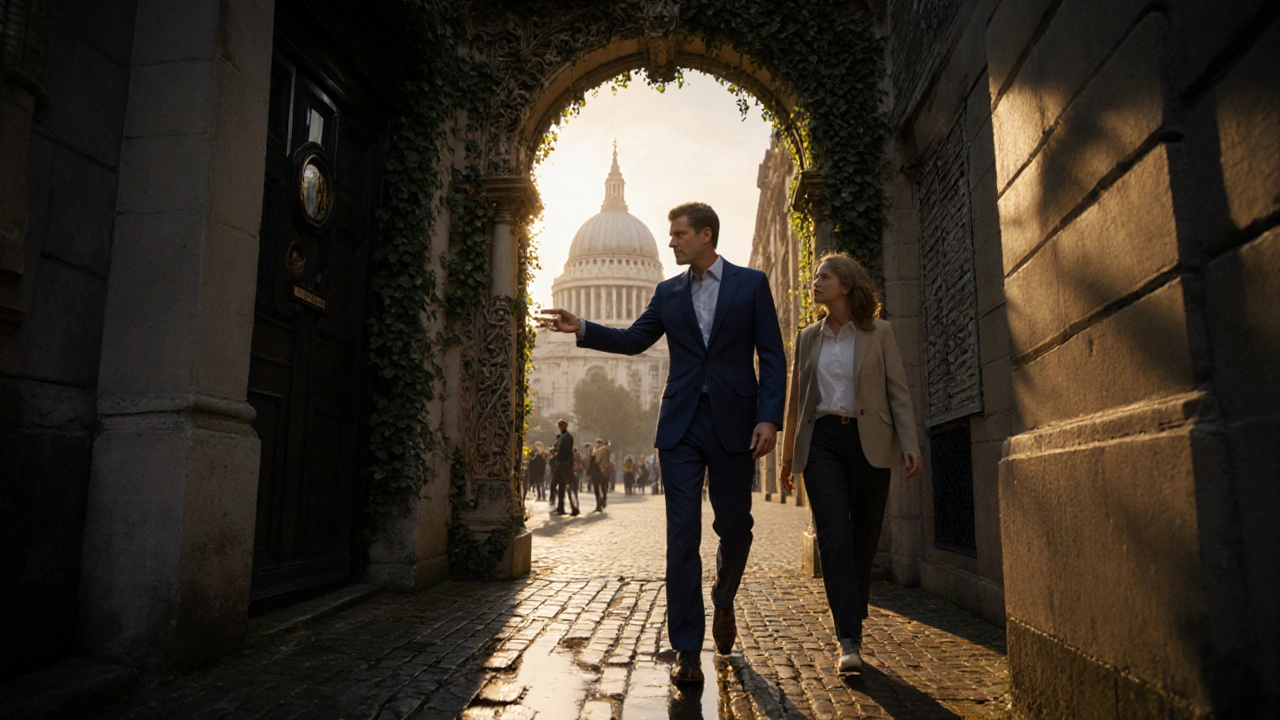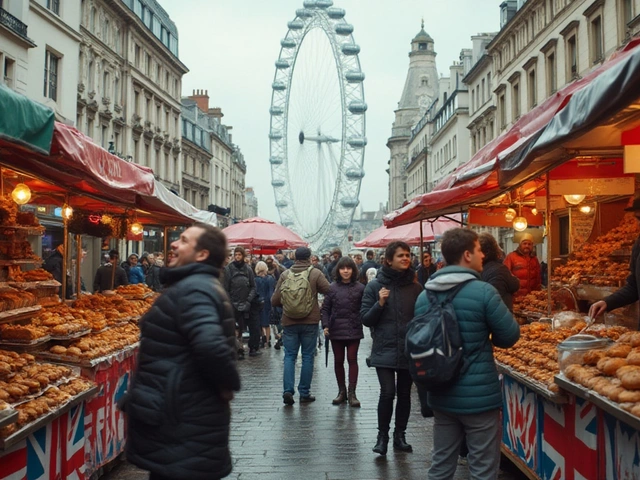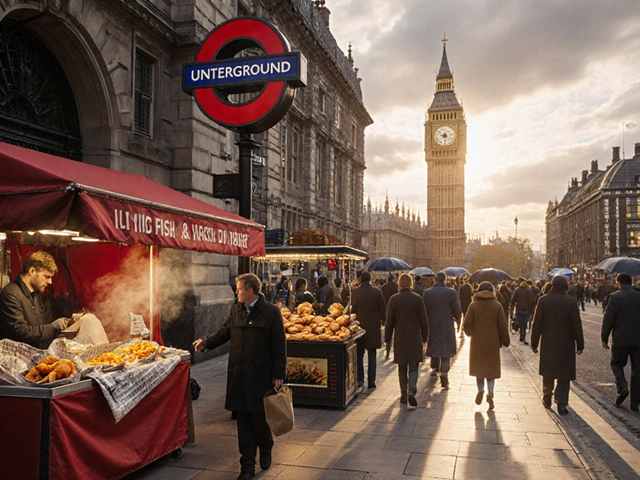
Living in London the bustling capital of the UK, known for its historic sites, cultural mix and world‑class transport links, you probably think you’ve seen it all. Yet the city’s layers keep unfolding, especially when you team up with a skilled guide. guided tours aren’t just for tourists; they’re a shortcut to hidden gems, insider stories and smoother logistics. Below, we’ll walk you through why professional guided tours are worth every penny and how to squeeze the most out of them, even if you call this metropolis home.
What Makes a Professional Guided Tour Different?
A Professional Guided Tour a curated experience led by trained, knowledgeable guides who handle transport, tickets and storytelling turns a simple stroll into a narrative adventure. Guides study the history, architecture and local anecdotes, so you get facts you won’t find on a plaque. They also coordinate timings, manage crowds and often include exclusive access-think private galleries or after‑hours viewings. For Londoners, this means you can finally step inside places that usually require a membership or early‑bird booking.
Popular Types of Tours Around London
- Walking Tours explore neighborhoods on foot, from the cobbled lanes of Covent Garden to the street art of Shoreditch
- Bus Tours hop‑on hop‑off routes that cover major landmarks like the Tower of London, Westminster and Greenwich
- River Thames Cruises sail past the Houses of Parliament, the Shard and the O2 while hearing stories from a captain‑guide
- Food Tours taste the city’s multicultural flavors, from a full English breakfast in a historic pub to Asian street fare at Brick Lane
- Day‑Trip Excursions guided outings to nearby attractions such as Windsor Castle, Oxford or the Cotswolds
How to Choose the Right Tour for You
Start by answering three quick questions:
- What’s your primary goal? History, food, photography, or simply a relaxed day out?
- How much time do you have? A two‑hour walk, a half‑day bus ride, or a full‑day excursion?
- What’s your budget? Some providers charge per person, others offer group rates or season passes.
Next, compare the following criteria:
| Provider | Type | Duration | Price (per adult) | Special Feature |
|---|---|---|---|---|
| City Sightseeing | Bus | 3‑hour hop‑on hop‑off | £30 | Live commentary via headphones |
| London Walks | Walking | 2‑hour themed walks | £15 | Historic costumed guides |
| Secret Food Tours | Food | 3‑hour tasting | £45 | Chef‑led market stops |
| Thames River Cruises | Boat | 2‑hour daylight cruise | £25 | Commentary on riverside architecture |
| Context Travel | Walking / Private | Half‑day to full‑day | £120 | Expert historians as guides |
Use this grid to line up your priorities. If you want budget‑friendly flexibility, the hop‑on bus is a safe bet. If you crave depth, a specialist like Context Travel delivers a scholarly experience.

Local Providers Worth Checking Out
Here are five operators that consistently earn high marks from Londoners:
- City Sightseeing operates the iconic double‑deck ‘hop‑on hop‑off’ buses covering 25 routes across Greater London
- London Walks offers over 30 themed walks, including the Jack the Ripper and Royal Palaces tours, led by costumed historians
- Secret Food Tours focuses on culinary experiences, taking groups through Borough Market, Brick Lane and Chinatown with tasting portions
- Thames River Cruises provides day and sunset cruises plus narrated tours that highlight the Thames’ role in London’s growth
- Context Travel delivers small‑group, expert‑led tours that dive deep into architecture, art and politics of the capital
All of these companies have online booking platforms, accept contactless payments and often offer discount codes through local London newsletters such as ‘Time Out London’ or ‘The Londonist’.
Insider Tips for Getting More Out of Your Tour
- Book early, but stay flexible. The best slots fill up weeks ahead, especially for weekend food tours. Look for “flexi‑date” tickets that let you shift the day without a penalty.
- Combine tickets. The London Pass a city‑wide attraction card that includes free entry to many museums and a hop‑on hop‑off bus ride can shave off £10‑15 per person when paired with a bus tour.
- Dress for the experience. Walking tours in the West End can get muddy after rain; waterproof shoes and a light rain jacket keep you comfortable.
- Ask the guide for “off‑the‑record” spots. Many local guides know a quiet garden in Kensington or a hidden tea room near St. James’s Park that isn’t on the brochure.
- Use an Oyster or contactless card for transport to the meeting point. It’s cheaper than buying a separate bus ticket and works on most routes.

Enhancing a Guided Tour with DIY Elements
Even the best tour can be enriched with a few personal touches:
- Before you set off, download a free offline map of the area from VisitBritain the official UK tourism board providing maps, event listings and travel tips. Mark any extra stops you’d like to add.
- Pack a small snack from a local bakery-perhaps a pastry from Borough Market a historic food market offering artisanal breads, cheeses and street eats-so you can refuel without breaking the flow.
- Bring a notebook or phone app to jot down interesting facts. Later you can turn those notes into a mini‑blog post or a social‑media carousel that shares your experience with friends.
- If you’re on a walking tour of historic sites, consider a quick stop at a nearby Royal Museums Greenwich home to the Royal Observatory, Cutty Sark and the National Maritime Museum for an extra dose of history.
Common Pitfalls and How to Avoid Them
Even seasoned Londoners can fall into traps. Here are a few and the fixes:
- Overpriced “premium” tours. Always compare the itinerary with free walking routes posted on Time Out London the city’s cultural guide featuring free walking maps and event calendars. If the paid version offers only a few extra stops, you might be better off self‑guiding.
- Last‑minute cancellations. Check the provider’s refund policy. Companies like National Trust which also organizes heritage tours, offer a 24‑hour free cancellation window that can save you a full price.
- Missing out on peak experiences. For example, the changing of the guard at Buckingham Palace is best seen early in the morning; many tours start too late. Choose a provider that sets the meeting point before 10 am.
Quick Checklist Before You Book
- Identify the type of experience you want (history, food, scenery).
- Set a budget and check for group discounts.
- Read recent reviews on TripAdvisor or Google; look for comments on guide knowledge and punctuality.
- Confirm the meeting point is easily reachable by Tube or bus.
- Check the cancellation policy and whether a travel insurance rider covers tour refunds.
Are guided tours worth it for locals?
Yes. Even residents discover hidden courtyards, behind‑the‑scenes access and fresh narratives that make familiar landmarks feel new. A guided tour often includes skip‑the‑line tickets, which save time during peak seasons.
How far in advance should I book a tour?
For popular food or themed walking tours, book at least two weeks ahead. For day‑trip excursions to places like Windsor, a month’s notice secures a spot, especially on weekends.
Can I get a discount as a London resident?
Many operators offer a “Londoner discount” when you use a local postcode at checkout. Sign up for newsletters from Time Out London or The Londonist to receive promo codes.
Do guided tours include transportation?
It depends on the package. Bus and river tours always include transport. Walking tours may offer a short shuttle from a Tube station. Always read the itinerary to know what’s covered.
What’s the best time of year for guided tours in London?
Spring (April‑June) and early autumn (September‑October) provide mild weather and fewer crowds, making walking and river tours especially enjoyable.
Comments (8)
- randy sng
- October 23, 2025 AT 20:53 PM
If you think you can just stroll past the Tower of London and magically absorb its history, you're overlooking the core logistics that make a tour worthwhile 😊. A professional guide coordinates tickets, transport, and timing, which eliminates the typical bottlenecks that plague solo explorers. Moreover, guides are trained to spot nuances that standard guidebooks completely miss. In short, the cost is an investment in efficiency, expertise, and exclusive access.
- Mary Aslanyan
- October 23, 2025 AT 21:26 PM
Actually, most guided tours in London are just a rehash of the same boiler‑plate narrative you can find on any wiki page. The “insider stories” are often fabricated anecdotes designed to make the guide sound clever. If you really want authenticity, DIY walking routes with a good map beat paying for a scripted experience.
- Abraham Delgado
- October 23, 2025 AT 22:00 PM
i swear they plant microchips in the tour buses to track our thoughts they want us to think about the monarchy is all a distraction the real story is hidden under the river and the guides are paid to keep it quiet
- Louise Tuazon
- October 23, 2025 AT 22:33 PM
I hear you, but remember that a guide’s enthusiasm can turn a bland stone wall into a living story 🌟. Even if some facts repeat, the live commentary and spontaneous Q&A bring a personal touch you’ll never get from a PDF. Plus, the group dynamic often sparks unexpected insights that solo explorers miss.
- Alison Bennett
- October 23, 2025 AT 23:06 PM
Did you know some tour companies are secretly funded by undisclosed sponsors? 🙃
- Ellie Holder
- October 23, 2025 AT 23:40 PM
Let’s unpack the implication that “secret funding” automatically invalidates the entire guided‑tour industry, shall we? First, the presence of corporate sponsorship is a standard practice across many cultural sectors, not a covert operation. Second, such sponsorships often enable reduced ticket prices, making historical experiences more accessible to the public. Third, the claim ignores the rigorous accreditation processes many tour operators undergo, which include third‑party audits and compliance with heritage preservation standards. Fourth, the narrative that guides are “paid to keep it quiet” overlooks the fact that professional guides are incentivized to receive positive reviews, which are contingent on delivering authentic, engaging content. Fifth, the very act of mentioning hidden “microchips” or “undisclosed agendas” without concrete evidence veers into conspiracy territory, diluting legitimate critiques about pricing transparency. Sixth, while it is prudent to question commercial influences, it is equally important to differentiate between speculative gossip and documented facts. Seventh, many reputable operators publicly disclose partnerships on their websites, allowing consumers to make informed choices. Eighth, the value of a knowledgeable guide-who can contextualize a centuries‑old monument within contemporary society-remains undeniable. Ninth, empirical studies have shown that participants on guided tours retain information at higher rates than those who explore alone. Tenth, the emotional resonance of hearing a story told in situ cannot be replicated by a brochure. Eleventh, ignoring the tangible benefits-such as skip‑the‑line access and curated itineraries-undermines the practical advantages the tours provide. Twelfth, the industry’s contribution to local economies through employment and tourism revenue is well documented. Thirteenth, when assessing any service, a balanced perspective that weighs both potential conflicts of interest and the demonstrable benefits is essential. Fourteenth, the dialogue around transparency should focus on encouraging clearer disclosures, not outright dismissal. Fifteenth, ultimately, the decision to book a guided tour rests on a personal cost‑benefit analysis rather than a blanket accusation of deceit. Sixteenth, so while vigilance is healthy, let’s ground our skepticism in verifiable data instead of unfounded speculation.
- David Washington
- October 24, 2025 AT 00:13 AM
Ever wondered how the very act of storytelling on a tour mirrors the way societies construct shared memory? 🤔 A guide isn’t just a presenter; they’re a cultural translator, weaving together archaeology, politics, and everyday life into a narrative tapestry. When you join a group, you’re also participating in a collective act of remembering, which can deepen your connection to the city’s past.
- Garry Lawton
- October 24, 2025 AT 00:46 AM
Sounds like a plan!







